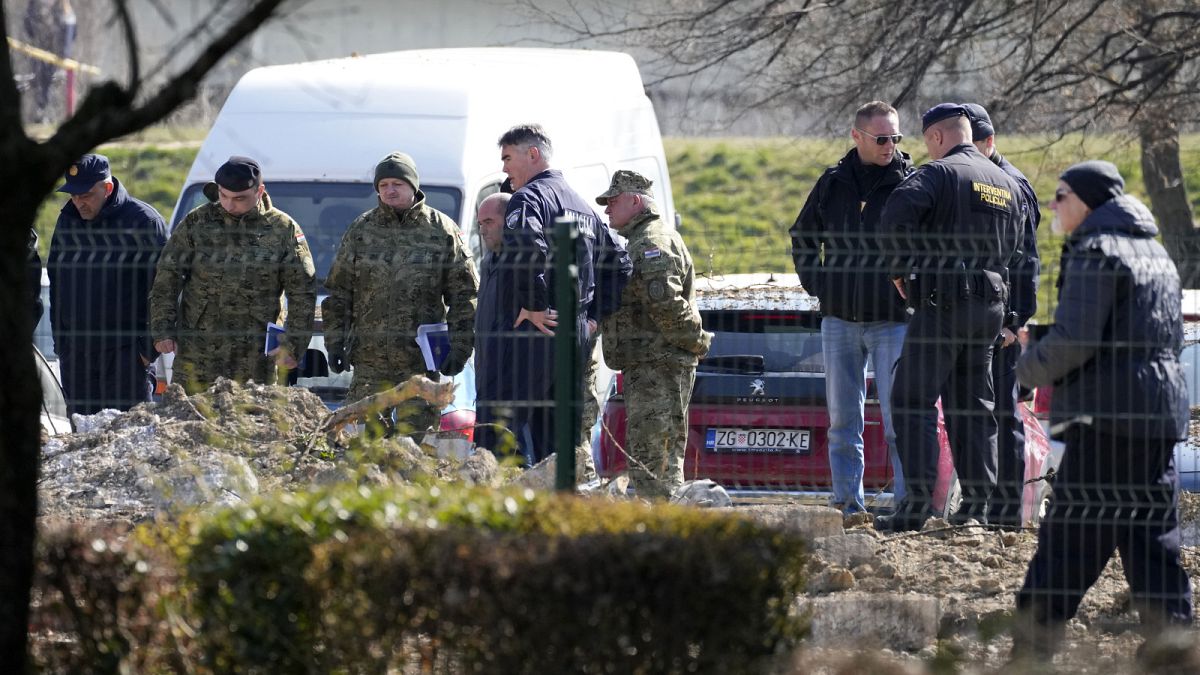A large Soviet-era drone that appeared to have flown from Ukraine crashed in the Croatian capital on Thursday night.
The large military drone that crashed in the Croatian capital Zagreb on Thursday night contained "aeroplane bomb parts", Minister of Defence Mario Banožić said on Sunday.
"Traces of explosives were found, as well as other traces that indicate that this was not a scouting aircraft," he said, detailing the ongoing investigation on the crewless vehicle that most likely flew all the way from the Ukrainian war zone.
"We found aeroplane bomb parts and have concluded that it was also Soviet-made."
The crashed unit is thought to be the 1970s-made missile-like drone Tu-141 currently in use by the Ukrainian forces, but Banožić said that the Russian military could also have launched the aircraft.
"There are elements indicating it could have come from either side," he stated.
The investigation is yet to confirm whether the Tu-141 was modified to simply carry the explosives, or retooled as a missile altogether.
A black box has been retrieved, and its contents are being analysed. Banožić also stated that Croatia is working together with NATO — who are conducting a parallel investigation — to try and retrace the drone's point of origin.
Chief adviser to the Ukrainian defence minister Markiyan Lubkivsky earlier told Croatian newspaper Jutarnji List that the crashed drone did not belong to Ukraine.
The Russian authorities have not made any statements regarding whether the Tu-141 might be a previously moth-balled device that might have been recently made operational again.
Six-tonne drone crashed amid NATO allies' confusion
On Thursday night, the drone crashed in Jarun, an area of Zagreb, 50 metres from a large university dormitory.
There were no reported injuries, but a loud blast was heard from the crash, and around 40 cars were reported as damaged.
The dart-like Tu-141 or Strizh is fired from a launcher and can collect various information using a number of imagers while flying at transonic speeds. The six-tonne, four-metre-long unmanned device lands with the aid of a parachute and has to be recovered to relaunch.
Croatian officials criticised NATO on Saturday for what they said was its slow reaction to a military drone that flew over several NATO member states, including Romania and Hungary, for at least an hour.
"We cannot tolerate this situation, nor should it have ever happened," Prime Minister Andrej Plenković said while visiting the crash site.
NATO said the alliance's integrated air and missile defence had in fact tracked the object.
"NATO's integrated air and missile defence tracked the flight path of an object which subsequently crashed in Zagreb," a NATO official confirmed in a statement sent to Euronews.
But the Croatian PM said the country's authorities were not informed and that NATO reacted only after journalists posed questions.
Plenković called on the Hungarian authorities to launch an investigation into why its defences supposedly did not notice the drone as both Croatia and Romania had little time to react to the fast-moving object.
"Fortunately, something much worse did not happen," Plenković said, adding that Hungarian Prime Minister Viktor Orban "found out about this after me."
Hungarian authorities confirmed they were also investigating the incident as "the airspace of several NATO member states, including Hungary, was involved in the drone flight," foreign minister Péter Szijjártó said on Facebook on Friday.
"We are cooperating closely with the Croatian authorities and other NATO allies in the investigation," Szijjártó stated.
Zagreb mayor Tomislav Tomašević said it was crucial "to determine who operated the aircraft and where it came from and to ensure that it never happens again".
He said parts of the flying object were scattered in several locations and that it was "incredible" that no one was hurt.
